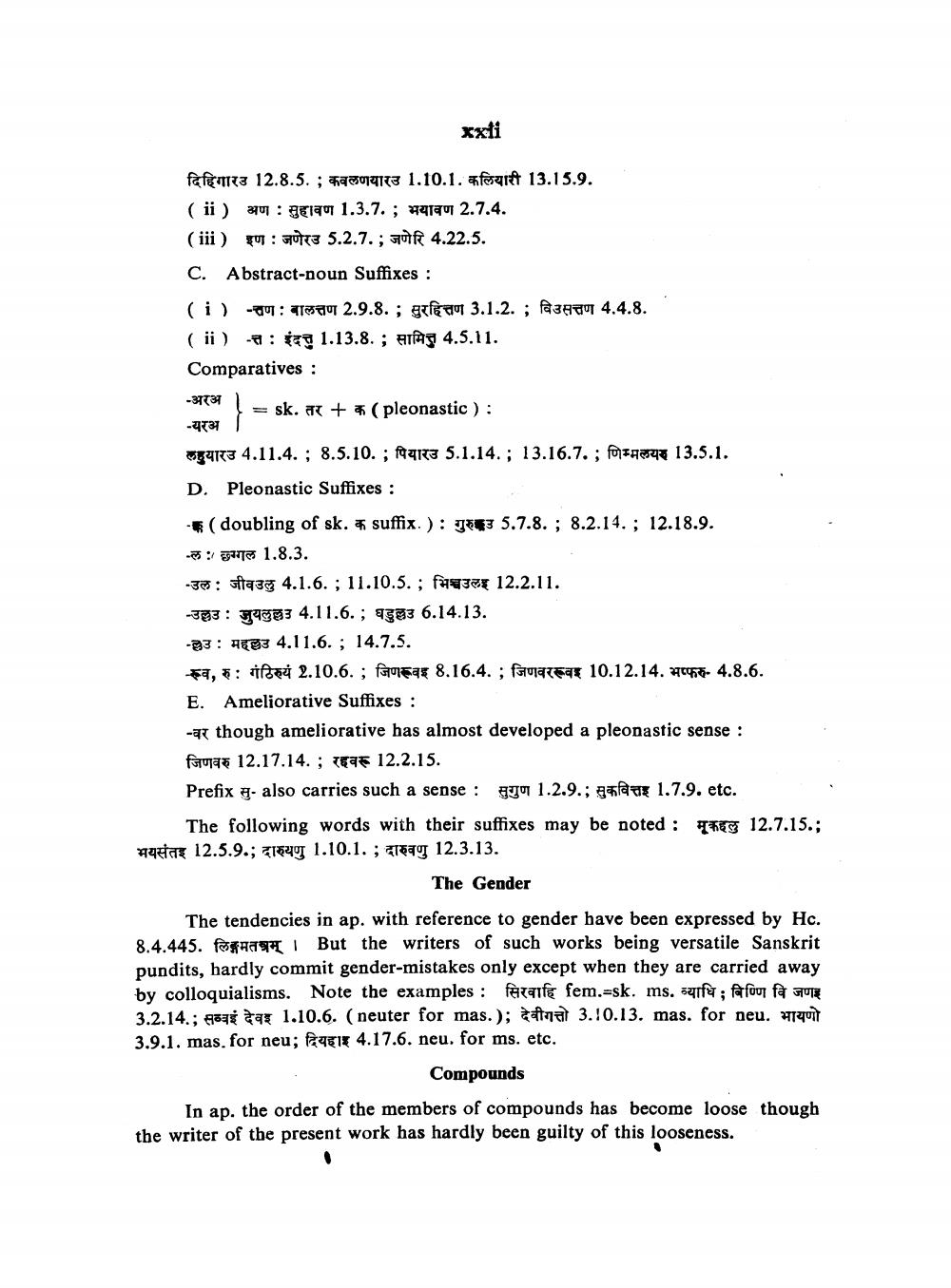________________
xxti
दिहिगारउ 12.8.5. ; कवलणयारउ 1.10.1. कलियारी 13.15.9.
(ii) अण : सुहावण 1.3.7; भयावण 2.7.4.
(iii) इण जणेरड 5.2.7. ; जणेरि 4.22.5.
C. Abstract-noun Suffixes :
(i) राण: बालत्तण 2.9.8 ; सुरहित्तण 3.1.2 ; विउसत्तण 4.4.8.
(ii) : इंदतु 1.13.8 ; सामितु 4.5.11.
Comparatives:
}
-अरअ
sk.(pleonastic) :
- यरअ
लहुयारउ 4.11.4; 85.10 पियारउ 5.1.14. ; 13.16.7. ; णिम्मलयर 13.5.1.
D. Pleonastic Suffixes:
(doubling of sk. « suffix. ): g 5.7.8.; 8.2.14.; 12.18.9.
-ल : छाल 1.8.3.
-उल : जीवउलु 4.1.6; 11.10.5; भिश्व उलइ 12.2.11.
-उल्लउ : जुयलुल्ल3 4.11.6; घडुल्लउ 6.14.13.
-ਝਾਤ : ਸਦ੍ਧਤ 4,11.6. ; 14.7.5.
-रूव, रु : गंठिरुयं 2.10.6; जिणरूवइ 8.16.4. ; जिणवररूवर 10.12.14. भप्फरु- 4.8.6.
E. Ameliorative Suffixes :
=
-though ameliorative has almost developed a pleonastic sense : जिणवरु 12.17.14 ; रद्दवरू 12.2.15.
Prefix - also carries such a sense:
1.2.9.; a 1.7.9. etc.
The following words with their suffixes may be noted: 12.7.15.; भयसंतर 12.5.9.; दारुयणु 1.10.1.; दारुवणु 12.3.13.
The Gender
The tendencies in ap. with reference to gender have been expressed by Hc. 8.4.445. But the writers of such works being versatile Sanskrit pundits, hardly commit gender-mistakes only except when they are carried away by colloquialisms. Note the examples: fenfe fem.-sk. ms, safe, for fr 3.2.14.; 1.10.6. (neuter for mas.); 3.10.13. mas. for neu. 3.9.1. mas. for neu; 4 4.17.6. neu. for ms. etc.
Compounds
In ap. the order of the members of compounds has become loose though the writer of the present work has hardly been guilty of this looseness.




